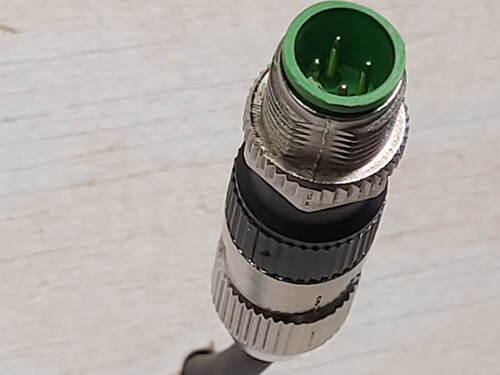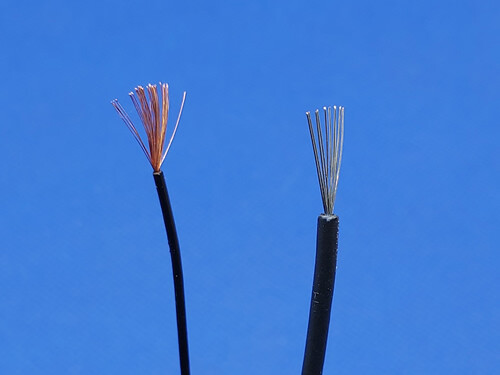
For many years, the development of new products for industry meant custom designing every aspect of the device from its mechanical parts, to its “brain” of electronic components, sensors and supporting electronic wiring.
All connections were made electrically using discrete insulated power wire for point-to-point connections. Much of the wire had to be specifically spec’d for each purpose and thus required many types. All of the circuitry was analog meaning that electrical current was the only type of transmission through the wires.
As the technology of computing and digital electronics started to take hold, new methods arose in the interfacing of electronic devices. Digital PLC systems began standardizing their data and power requirements that changed the way machines are wired today. Not only was there a requirement for current power to run through wire, but there was now also data signals of 0’s and 1’s flowing through the wire.
The Birth Of A Better Cable
Design engineers saw that a more robust connection system was needed to replace the other more fragile methods used in the consumer electronics industry such as circuit board headers, ramps and ridges on terminal connectors etc. Newer machines capable of high speed movements, millions of repetitions and complex movements meant needing suitable wiring that could perform in the same manner electrically, digitally and mechanically.
Not only was there an opportunity to combine more than one discipline of use for the wire (data and current), there was additional attributes taken into consideration at that time of creation as well including polarization of connector tips, alternative wiring pinouts for different applications, and combining multiple discrete wires into a cable to save on time, weight and ease of installation. High performance screw-on connectors improved quality at the connection point.
M12 Specifications
There are many aspects of M12 Cables that must be considered when using them on a product. Let’s take a look at some key points:
Internal Conductors

a) Gauge
Standardly, M12 cables have 0.034″ diameter inner conductors (20 Gauge) with 3 or 4 conductors per cable and are standardly colored brown/Black/Blue/White. Custom versions as low as 2 conductors and as high as 12 conductors are currently produced.
The current rating is 4 amperes per conductor for M12 connections.
b) Stranding

The internal count of individual strands of copper within a single conductor of an M12 cable matters. The pliability of a cable for robotic use and its longevity are determined by its stranding and its jacket material type.
Higher stranded wire can bend easier and more often without risking breakage internally.
Lower stranded wire has more rigidity and does not bend as much and may not last as long depending on application– but is usually cheaper and preferred when the cable is stationary.
Jacket Material
PVC – Polyvinylchloride jacketing is the most common and cheapest option for M12 cables. It provides very good protection and rigidity for cable, but does not flex very well under extreme conditions. It works well for stationary connections and Easy Strip applications
PUR – PolyUrethane Rigid Foam – A high performance jacket material made for the robotic industry. There are varying grades of flex capable of this type of jacket defined below:
Flex – Greater than 2 million bend cycles, C-Track Rated, enhanced oil and abrasion resistance
High Flex – Greater than 10 million bend cycles with 180 degree torsion rated
Robotic Flex – Same >10 million bend cycle rating, but has the ability to torsion 360 degrees
**It must be noted that this type of material is NOT used for insulating internal electrical conductors as it has poor electrical characteristics, but works rather well as a jacketing material because of its resistance to chemicals, high flex, and stability over a wide temperature range.
Header Keying
Different type of digital modules require accurate connection to keep systems safe. When using an M12 cable as data in some places on a machine, and power in other places, there is a need to differentiate them as to not connect power to sensitive data lines.
The use of Key Coding on the connector tips are an easy way to ensure proper connections to systems.
Connector Pitching
Due to the reality that some automation requires cabling to fit into tight spaces and often run along channels, The tips of the M12 connector can be purchased straight or with a 90 degree pitch.

Application
Selecting the right M12 cable for your application is key to keeping costs down, and producing a product with a long lifespan. Engineers must analyze the movement of a machine and how the cabling is affected by it during operation to determine the correct jacketing flex combined with the right stranding to ensure performance
Why choose and M12 connection system?
M12 connection systems eliminate the need to have on-staff electricians capable of making discrete wire connections to a machine product with plug and play connections. This also means a different approach to assembly that saves time by not having to wire each connection individually by hand.
There are 2 schools of thought about selecting M12 cabling. The first option is to spec a cheaper pvc cable in knowing that after a million cycles, it will need replacing but since they are cheaper and easy to replace, no problem. The second school of thought says to spec a high flex PUR cable that can handle 10 x the cycles of a pvc cable but will also cost much more per cable on the front end.
I hope you found this information educational and insightful when selecting m12 cables for automation!

